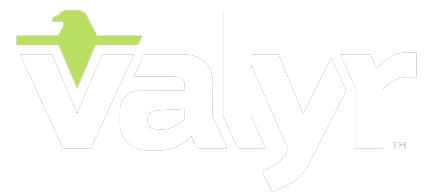Walking the Tightrope between Tech Innovation and Governance

This article first appeared in our monthly Jacksonville Daily Record Industry Insights Column How Companies Can Innovate Responsibly While Mitigating Risk There’s a wonderful line delivered by Jeff Goldblum in 1993’s box office smash movie “Jurassic Park” that perfectly crystalizes many of the biggest questions that companies struggle with today. “They were so preoccupied with whether or not they could that they didn’t stop to think if they should,” says Dr. Ian Malcolm, a chaos theory scientist, as he confronts the man who has resurrected dinosaurs from extinct DNA, shortly before they escape and wreak havoc. While most modern-day businesses don’t need to worry about rampaging velociraptors, they do confront a familiar dilemma: embracing the latest technology to gain a competitive edge while ensuring these advancements align with their values and commitment to customers, especially around privacy and security. Innovation and Governance: A Complementary Partnership Innovation and governance are often seen as competing forces, but companies that view them as complementary are far more successful. According to recent research, companies embracing a culture of innovation are over three times more likely to generate higher revenue and enjoy greater customer satisfaction than their competitors. A strong governance framework doesn’t need to stifle innovation—it should support it. Done right, governance provides a flexible foundation where teams can experiment safely, backed by clear guidelines that protect both customers and the organization. A balanced governance framework achieves this in a few ways: Defining Success in Innovation and Governance We all recognize the hallmarks of innovative success: increasing lead conversion, higher ROI, and streamlined workflows that save time and money. Governance success, while perhaps less glamorous, is just as crucial: it involves regulatory compliance, fortified data security, and reduced risk to all stakeholders. A well-balanced approach actively connects these areas, ensuring that innovation drives value safely and responsibly. For companies struggling to find this balance between “what’s next” and “what’s safe,” we’re here to help. Email us at hello@valyr.com to explore how a tailored governance strategy can support your innovation goals and lead to a synergy that sets your business apart. Related Articles: From Hype to High Impact: Practical AI for Your Enterprise Strategy How Companies Are Redefining Success With Cloud Technology
Nightmare on Dev Street

This article first appeared in our monthly Jacksonville Daily Record Industry Insights Column How Outsourcing to the Wrong Dev Team Can Haunt Your Business Spooks and specters have nothing on the horror bad code can cause. When data mysteriously disappears, your login screen freezes, or users are left staring at a never-ending loading wheel, it can be a nightmare. There’s no ghost in the machine—just a lack of expertise. Many development teams are either out of their depth or fail to check their work before sending the invoice. And while we may not be afraid of the dark, we definitely need to worry when we’re working with a team that’s hard to reach. Lost in translation? Sometimes it seems like they’re just plain lost. You might imagine you’re hiring a dream team of seasoned pros, only to realize they’re more like a motley crew, haphazardly pieced together. With remote work the new normal, some developers won’t even meet you in person—they hide behind screens, creating subpar communication the real fright. Development Hall of Horrors Outsourcing isn’t the problem. It’s when companies deliver lackluster work and avoid communicating until the situation turns dire. Do they really “get” what you’re after, or are they just pushing a cookie-cutter solution? When development teams fail to meet expectations, disappointment can quickly become disaster. One client, a license plate camera company, came to us from a nightmare scenario. Their offshore team had built a full cloud infrastructure—but it was all under the developer’s account, effectively locking the company out of its own system. In the end, we were able to rebuild the systems to give them control over their own data, code, and infrastructure. We were lucky that the offshore team was willing to work with us to give us proper access. This isn’t always the case. Sometimes they just disappear! Or consider the chemical company that unknowingly had their project outsourced to a third party. Code quality became unpredictable, sensitive data was shared with faceless avatars, and the client was left cleaning up the mess. Avoiding Outsourcing Nightmares If you’re trusting a team with your business’s proprietary information, treat them with the same scrutiny you’d apply to safeguarding your most valuable assets. Vet them rigorously. Ask for airtight references and have them sign a formal NDA with penalties for breaches, subcontracting, or leaving back doors into your system. The final product you pay for should always be a treat, not a trick. Ensure everything— code, infrastructure, and account— is under your control with clear documentation. Outsourcing doesn’t have to be a house of horrors. By choosing the right team and ensuring transparency and accountability, you can keep your projects on track and your business safe. Ready to work with a team you can trust? Connect with us at hello@valyr.com to start your next project without the scare. Related Articles: Walking the Tightrope between Tech Innovation and Governance 7 Questions to Ask a Software Development Company to Find the Right Fit – Guide (2023) Set Your Sights on a Tech-Savvy 2025
